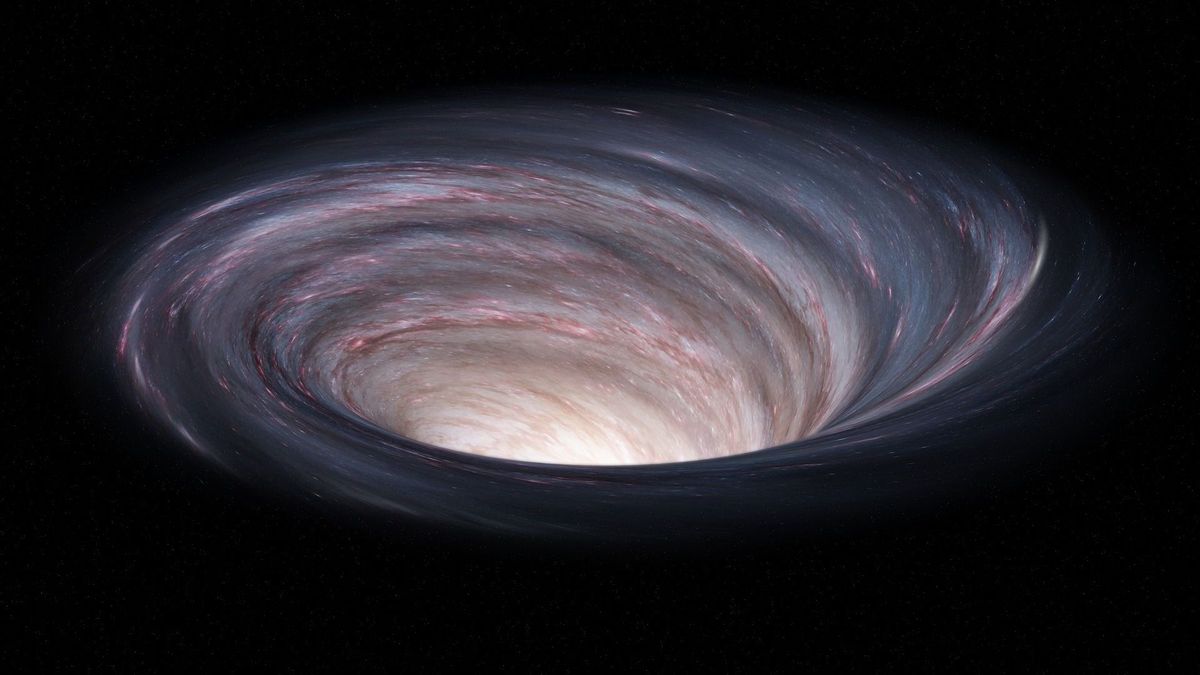The universe is full of revealing mysteries, one of them The Black Hole Conundrum. Since their discovery, both scientists and astrophysicists have wondered what is inside these astronomical objects and what happens to the light there. That is why the scientific community is working on various projects to answer these questions.
“People often ask What is a black hole and what would it be like to enter it?. “Simulating these hard-to-imagine processes helps connect the mathematics of relativity with real consequences in the real universe,” he said. Astrophysicist Jeremy Schnittman From NASA's Goddard Space Flight Center, responsible for this new simulation.
NASA has simulated the interior of a black hole
A black hole Gravity is a region of space so intense that nothing, not even light, can escape. When does it form? A massive star collapses under its own gravity At the end of his life. They can vary in size and mass, from small stellar-mass black holes to the “supermassive” black holes found in the centers of galaxies.
Your review provides Important information about the nature of spacetime and basic laws of physics. That is why NASA decided to carry out this simulation, which was a huge success.
On a conventional computer, this calculation would have taken more than ten years. The Discover a supercomputer at the NASA Goddard Space Flight Center It accomplished this task in just five days using just 0.3 percent of its processing capacity.
“I simulated two different scenarios, “One camera, like a substitute for a brave astronaut, misses the event horizon and is ejected, while the other crosses the threshold and seals its fate,” explained Schnittmann.
At the beginning of the video, the thin inner circle is called Photon ring. This image is created by light that surrounds the black hole one or more times. This oval, centered in the direction of the camera, shows the entire simulated sky.
The speed of the camera causes light sources directly in front to glow brightly as they fall toward the event horizon for several minutes. At this point, the light of the outer universe still shines, but it can no longer escape. After microseconds, the chamber is compressed by the black hole, i.e., it reaches its singularity.
Amazing images of black holes
In 2019 and 2022It is called Global Network of Radio Laboratories The Event Horizon Telescope produced the first images of supermassive black holes At the centers of the galaxies M87 and the Milky Way, respectively, it reveals a bright ring of hot gas surrounding a dark circular region.
Any light that crosses the event horizon, the black hole's point of no return, is permanently trapped, and any light that passes near it is deflected by intense gravity. These combined effects a “Shadow” This is twice the actual size of the hole's event horizon.
The black hole at the center of our galaxy, Sagittarius is called A, has mass Equivalent to 4.3 million soles, based on long-term observations of stars orbiting it. Its shadow has a diameter that spans half the orbit of Mercury in our solar system.






:quality(85)/cloudfront-us-east-1.images.arcpublishing.com/infobae/KTKFKR763RBZ5BDQZJ36S5QUHM.jpg)